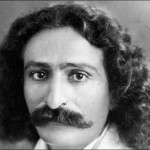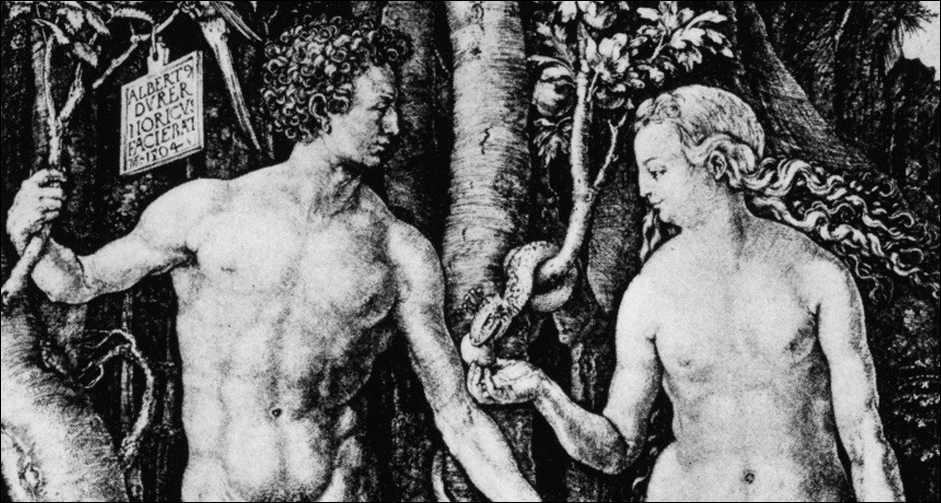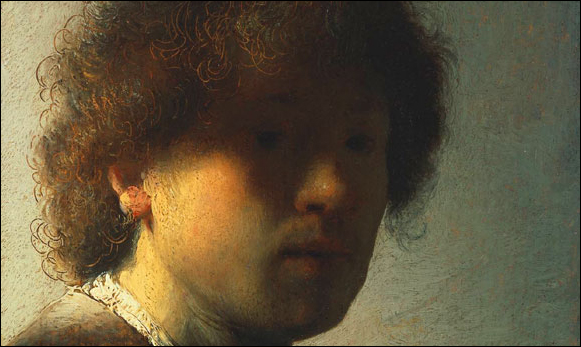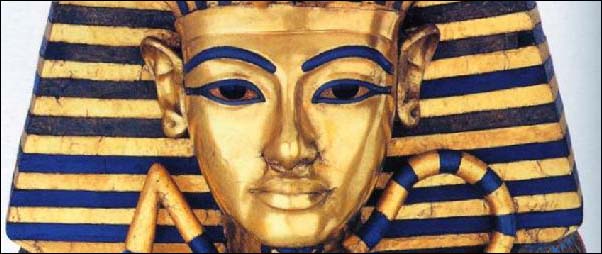Human actions are based upon the operation of the impressions stored in the mind through previous experiences. Every thought, emotion, and act is grounded in groups of impressions that, when considered objectively, are seen to be modifications of the mind. ~ Meher Baba (Discourses)
 In a broad way we can measure our efforts for self-remembering and being present (as well as other efforts connected to conscious evolution) by three yardsticks: frequency, duration, and depth. The first two are clear and easily understood. Frequency is how often we are able to bring ourselves back to effort, and duration is how long we can remain focused on the effort. But depth is not as easily understood. What makes one effort deeper than another effort?
In a broad way we can measure our efforts for self-remembering and being present (as well as other efforts connected to conscious evolution) by three yardsticks: frequency, duration, and depth. The first two are clear and easily understood. Frequency is how often we are able to bring ourselves back to effort, and duration is how long we can remain focused on the effort. But depth is not as easily understood. What makes one effort deeper than another effort?
In order to understand what depth means in relation to our efforts, we need to be able to observe and distinguish the five worlds that are available to us: false personality, true personality, essence, higher emotional center, and higher intellectual center. When these worlds become transparent to our understanding, then the depth of our efforts can be known by the world in which the effort concludes, with false personality being the shallowest world and the higher intellectual center being the deepest world. More specifically we need to concentrate on how impressions enter us and to what level they are transformed. If we lived entirely in the moment, with no history, no desires or opinions or beliefs, there would be no reason for an impression not to be fully transformed; that is, there would be no barrier for us to perceive an impression through the higher intellectual center. But this is far from our situation. At each level we have stored impressions or sanskaras that react to new impressions and effectively stop them from moving deeper. Sanskaras are stored in centers and have a character or taste connected to the energy (or hydrogen) of that center, so it is possible to talk about the sanskaras of false personality, which would be stored in the intellectual center, or the sanskaras of essence, which would be stored in the instinctive/moving centers.
The removal and transformation of sanskaras is a work that encompasses the whole course of conscious evolution, and so it is useful to have some understanding of how they function at different levels.
Sanskaras
Since I am bringing the concept of sanskaras into the Gurdjieff system, and since it is a term that is used widely and has a different meaning according to different religious practices and different spiritual thinkers, I will define what I mean by sanskaras. Sanskaras are simply accumulated imprints that are stored in our centers. Of the five seats of identity the first three—false personality, true personality, and essence—hold memories of our experiences. The higher emotional and higher intellectual centers do not store memories; they are instead a door to a timeless world where past (and on the deepest level) future experiences exist. Still, higher centers are affected by sanskaras from lower levels, so we must consider their relationship to sanskaras on lower levels.
One of the roles of lower centers is to hold information or imprints of our experiences so that they can be used by various selves (groups of ‘I’s). These imprints allow us to better negotiate the physical world and form basic understandings. For instance, the moving/instinctive centers hold memories of where things are in space. If we did not have these memories, we would not know where our friends lived or where we worked and would have to map out a route each time we visited a friend or went to work. There are many different types of sanskaras with different types of energy. The problem with sanskaras, from the point of view of awakening, is that they can block higher experiences. If you stand before a Rembrandt painting, scan the picture, and then begin to review all you know about Rembrandt, his history, his different styles, his times, you have halted the impression at a very specific level, in this case, the intellectual centers. The new impression of the painting is stopped by the old sanskaras stored in the intellectual center, which keeps the new impression of the painting from entering essence or higher centers. In this example we can say that the sanskaras in the mind blocked a potential higher experience.
Duality
In eastern thought the removal of sanskaras by balancing good and bad acts is a key part of conscious evolution, but if we look at what it actually means to balance good and bad sanskaras, we will see that essentially the process is one of transformation. Repentance is a process by which past wrongs are transformed by performing good acts, and an excess of goodness is transformed by seeing or understanding the world and people around us without subjectivity and acting accordingly. Balancing sanskaras is not a question of canceling out each bad impression or action with a good act; it is not a mathematical problem. It is a question of nullifying old imprints so that new impressions can enter the highest part of our being. Sanskaras, as imprints of experience, are not bad in themselves; they are only a denying force when we attach the lower parts of our being to them.
Working with sanskaras can be seen on two fronts: transforming old sanskaras and learning to stop creating new sanskaras.
In order to cease creating new sanskaras we need to be able to transform events as they happen through the conscious tools we have been given; that is, through self-remembering, being present, and the transformation of suffering and negative emotions. It is only this work, or the equivalent of it, that will allow new impressions to reach their natural depth.
Self and Being and Consciousness
The concepts of self and being and consciousness have different meanings for different spiritual and philosophical writers, so it is probably best that I try to describe what I mean by them here.
A self is a construct that holds or identifies with a group of similar sanskaras or experiences. Another way of thinking about it is that it a simply a group of ‘I’s.’ A self can support or oppose or be neutral to conscious evolution. False personality can be seen as a group of selves, but you can also talk about higher selves, ‘I’s’ that group together to support and evoke higher centers. Ouspensky called such selves deputy steward and steward.
Being is the accumulation of all our experiences. It is who we are. The problem in accessing our being is that our experience of it is usually fragmented. To bring the whole of being to any one moment or situation is difficult because of mechanical behavior. Identification fragments our being by concentrating on a small aspect of it, and negative emotions fragment our being through identification and by burning the energy needed to focus the whole of our being. In ordinary life when we say ‘he wasn’t himself’ what we mean is that he acted foolishly because he wasn’t able to access his past experiences that would have stopped his foolish actions.
Consciousness is what illuminates our being (or our various selves) at any given moment. The old analogy of consciousness as light is good if you imagine awareness connected to that light. By increasing consciousness we bring awareness to the more buried aspects of our being, the ones in the dark corners. The process of increasing consciousness requires courage because there are many experiences that are a part of our being that contradict our present pictures of our various selves. The tools used to increase consciousness are all the tools of conscious evolution, including the removal and transformation of sanskaras.
The Intellectual Center
Sanskaras as imprints of the intellectual center can be seen as thoughts or attitudes or opinions or beliefs. Meher Baba called these sanskaras unnatural sanskaras. They are accumulated through education, as well as through life experiences, but they are distinguished from other impressions of experiences in that they are formed into knowledge or opinions or convictions. They exist on the level of world 96 (false personality) or world 48 (true personality), and they may be positive or negative. Most false personality imprints are not the result of anything that can be called thinking. They are opinions that are acquired for reasons other than the recognition of truth or the development of consciousness. A man may, for instance, choose—I use this word lightly—to believe that there is no God, without examining deeper parts of his being or taking the time to try to comprehend the many aspects of mysticism, in order to impress other people. On the other hand, a man may choose to believe in God, again without examining the subject, because he is born into a family of believers. Both these opinions have the potential to block experiences or to block certain impressions from entering into deeper parts of ourselves. Holding beliefs or convictions without understanding or verification keeps us from understanding the very subjects where we hold convictions or beliefs. If we believe that people of a certain race, or religion, or gender are inferior to us, then, every time we are presented with an impression (experience) that contradicts our opinion, we don’t see that new impression, we instead see the sanskaras connected to our opinions.
Sanskaras on the level of world 48 begin with a capacity to reason in an attempt to look at our experiences and understand them through the intellect. Reason can make many mistakes, as it lacks the necessary scale to understand the deeper aspects of the universe. Science has uncovered great truths, but it is limited by its own methods and criteria because it doesn’t admit worlds or experiences beyond what we can know through the senses. To deny the existence of higher worlds because they cannot be measured by our senses is an obvious limitation; it creates an array of sanskaras that keep us in world 96 or in a superficial version of world 48. Sanskaras of this type essentially keep us tuned into the physical world when the potential for the experiences of higher worlds happen in the normal course of our lives. The death of a friend or loved one should bring a crack or shock to our consciousness that allows higher worlds to be experienced, but if we have opinions that our senses are the final version of reality, then those higher experiences will be blocked.
The jewel of an awakened man is a fully formed personality that can be described as a system of knowledge that does not stop impressions from entering into the deeper aspects of his being. Knowledge in true personality should be open-ended in the sense that it does not stop further understanding. This is best observed in the attitudes we take on. For instance, an attitude that I know more than other people is an obvious attitude that halts understanding. If I bring this attitude to a conversation, I will dismiss any lessons that are inherent in that conversation. On the other hand, if I bring an attitude that my understanding is insufficient and that others are brighter or more awake, I will also make many mistakes. The optimum attitude is one that is open and is happy to listen to others and to let what they say reverberate against our highest understanding. In other words it is best to let what others say bypass the shallowness of personality to where greater understanding is possible.
The Instinctive/Moving Centers
Sanskaras in the intellectual center are relatively easy to change. Sanskaras in the instinctive/moving center are much more difficult to change. Imprints of pleasure and pain, of likes and dislikes, and of sympathies and repulsions are stored in the instinctive center, and these imprints can give rise to desires, fears, and even hatred. Meher Baba called these sanskaras natural sanskaras
At this point it’s important to understand that certain experiences can impress themselves on more than one center. In other words Sanskaras are connected. This is not difficult to understand. An attitude in the intellectual center may be the result of an experience of physical pain, and a difficult emotional impression may appear as a sanskara in the instinctive center. Sanskaras in the instinctive and intellectual centers can halt new impressions from affecting the emotional center, and those same sanskaras may be the result of an emotional trauma. And it is usual for a trauma that affects the emotional center to imprint sanskaras in all the lower centers.
The primary way that instinctive sanskaras stop an impression from entering deeper parts of our understanding is through the expression of negative emotions. The expression of negative emotions is a mechanism in which sanskaras halt new impressions of a certain energy (or hydrogen) from affecting the emotion center.
The observation and eventual transformation of negative emotions is the best way to uncover and see the sanskaras that need to be transformed. When someone ignores us or says something that offends us, we can react in a variety of mechanical ways. We may become angry, we may feel slighted, we may feel guilty if we feel we have done something to deserve their disdain, or we may feel afraid and doubt our self-worth. All these reactions are based on instinctive sanskaras; that is, imprints of memories of how we have been taught to react to this type of interaction. Perhaps we react with anger because a parent or someone we respected acted in the same way in a similar situation. Our negative emotions can be thought about as learned sanskaras. They are imprints of ways of acting in particular situations, and they keep new experiences from entering the emotional center. Only the transformation of negative emotions can bring new impression to the emotional center, where understanding is possible. This is surprising work, especially at the beginning. Negative emotions are a terrible judge of other people’s motives. They are too reactive and seldom wait for a perception of the inner life of others. Half the time what I find is that when I want to feel offended by someone, I see that they are afraid of me and are acting aloof because of their fear. I also find that many times people are simply in a bad instinctive state and are not aware of the impression they are making on others. Much of what people say to us is more about their inner state than it is about any perception of where we are. The point is that in order to see this, I had to transform my anger or my feeling of being slighted.
The Emotional Center and the Higher Emotional Center
The primary way emotional imprints stop impressions from entering higher centers is through identification. On a human level emotions sit at the core of who we believe we are. Negative emotions, as we have already seen, are the result of sanskaras in the instinctive center, and positive emotions—emotions that cannot turn negative when circumstances change—are the property of the higher emotional centers. This can be a little confusing because in order for the emotional center to function correctly a certain level of energy (hydrogen 12) is necessary, but that energy indicates the functioning of the higher emotional center. So what is the emotional center and how does it hold sanskaras? The key to understanding emotional sanskaras is to begin to see how we form identities around them. For example, being kind is different than feeling that ‘I am kind,’ and acts of kindness can be performed without creating a self around them. Jesus spoke of this work multiple times.
When you do charity let your left hand not know what your right hand is doing, so that your charity will be in secret, and your Father who sees what is secret, will reward you. (Matthew 6.3 Lattimore Translation)
Our many selves can be seen as artificial centers of identity. They are meant to hold sanskaras or imprints from the various centers. When emotional I’s are used to support identity they become sanskaras; when they are used to perceive—as an ‘organ of perception,’ as Ouspensky says—those perceptions are added to our experience of the higher emotional center.
Emotion is the point where the physical and the astral meet. Emotions are rightly part of world 12, where memories are not corrupted by being stored in an artificial disguise of an attitude or a desire. In world 12 memory means a capacity to access actual experiences. Emotions, because they contain the necessary intensity, drive that capacity. But emotions also get mixed up with our identity as a physical being and with our various selves. So when we talk about emotional sanskaras we are talking about emotions that are used to bolster a self that is limited in scope by physical identity or false personality. If I see that another person is afraid of me or that they are lying to me that is the higher emotional center, but when a part of me uses that perception to define myself, I am creating sanskaras, imprints that will halt new impressions from entering higher centers.
The Higher Intellectual Center
Though there are exceptions, there are, for the majority of us, two ways that we can approach the higher intellectual center in physical life. The first is through the long work of conscious evolution. The second, and more common way, is through powerful emotional or physical shocks or traumas. There are a number of factors at play here. First, in a life-threatening situation, the lower centers are overwhelmed, so that the sanskaras that normally keep an impression from reaching the higher intellectual center are bypassed. Shock, in the normal medical sense of the word, is a temporary non-functioning of the centers where our being habitually resides. An inability to function, while a person is in shock, can indicate that the person suffering the shock has little or no experience in navigating the world while in higher centers.
According to Rodney Collin (in the Theory of Eternal Life) our initial experience after our actual death will be the reliving of our life from the point of view of the higher intellectual center. So the seeing-my-life-pass-before-my-eyes phenomenon that many people recount after a near-death experience can be seen as a rehearsal of the death experience. It is a glimpse of what is to come.
The higher intellectual center has the capacity to hold experiences in a very compressed form. Rodney Collin calculates that a life of 76 years could be relived in the higher intellectual center in the equivalent of 40 minutes. Such a compression translates into quickness and in an intensity of experience, and this is a major obstacle to our approach to the higher intellectual center because the speed at which the higher intellectual center operates cannot be captured by the lower parts of our being or by our various selves.
Because of the way many of us first gain knowledge of the higher intellectual center, it is common for most people to associate the higher intellectual center with trauma. This is not a conscious association; it just happens that many of our experiences in the higher intellectual center are traumas or negative shocks. So when we talk about the sanskaras connected to the higher intellectual center, what we are looking at are our attitudes, buffers, and emotions connected to becoming sick, or connected to the injury and death of the physical body.
Sanskaras and Death
The question of which sanskaras follow us into the death experience and into a new reincarnated life depends on the level of the sanskaras. Most intellectual or unnatural sanskaras will be lost in the shock of death. Aspects of personality generally don’t survive the shock of death unless they are rooted in deeper aspects of our being. As we have already seen, it is common for a single experience to create imprints in different centers or levels, so even though thoughts, attitudes, and prejudices will disappear, the root experiences that formed those attitudes will remain. A new life is not a new slate. We not only bring our deepest understandings to a new life, we also bring the sanskaras that are imprinted on higher centers and essence. So-called subconscious desires are often deeply-rooted sanskaras that have followed us from previous lives. Because the sanskaras remain, but the memory of the events that caused the imprints is inaccessible, we react to these sanskaras without understanding why we react in the way we do. Our reactions may take the form of irrational fears, unfounded prejudice, or personality traits that form without a clear basis in this life. For example, a person whose sanskaras are imprints of suffering where he or she had no control, may form a personality that attempts to dominate and control their environment and their family and friends. This all gets mixed up with the new sanskaras that are formed in this life. This can be especially confusing in relationship to sanskaras created in childhood, where the deeper aspects of our being are more exposed and personality has not yet learned to block negative experiences.
In the death experience the being of the deceased is disassociated from a body, but through higher centers relives the experiences of the past life. The higher centers (the soul and spirit) are vehicles in themselves, but the being of the deceased can only take advantage of a separate life without a physical body if it has the mass and the desire to do so. The mass depends on its ability to focus itself in higher intensities. Self-remembering and most of the practices of conscious evolution are a preparation for this focus. The desire depends on where the focus of our desires are centered in the life we have just lived. If all our desires referred to the physical things: food, sex, comfort, and pleasure, then the being naturally longs for another physical body so that it can gratify those desires. Physical desires can only be satisfied by having a physical presence, and so a purely physical man would suffer the frustration of being in a world that offered no outlet for his cravings.
For one factor only would separate the purgatory suffered by the brutally sensual, from an unimaginable paradise of new knowledge, freedom, experience and truth. That factor is the difference between the cravings and longings of men of different being. ~ Rodney Collin (The Theory of Eternal Life)
Emotional and intellectual desires, on the other hand, can find fulfillment in spiritual worlds.
The poet relying in the physical world on vague presentiments of emotions, scenes and moods, on indefinable sensations of the being of men, women, cities, seas and forests, could there perceive the nature of such things directly, by penetration rather than external perception. The philanthropist would at last be able to understand the needs of others, instead of imposing his own upon them. While the man desiring to learn would be enabled to pass momentarily across the world in search of a teacher of the level of wisdom appropriate to his need. ~ Rodney Collin
What we see in these examples is that when a man dies, the being of that man can be said to be left with its impressions or sanskaras, and will seek to identify with a body that can express those sanskaras. So a man who dies identified with physical desires will seek to be reincarnated in a physical body to be able to express those desires. If they are coarse desires, then he will seek out a life that is coarse. If his desires are refined, his being will seek out a life that allows the gratification of refined desires. And a man who dies with unresolved artistic or emotional or intellectual desires will choose a life where those desires can be expressed. And a man who dies with desires for spiritual experiences will attract a spiritual life as a teacher, artist, or mystic. It is unresolved desires that call us back, no matter how coarse or fine.
 The evolution of a soul can be thought about as a succession of ascending lives, where a man sheds coarser animal sanskaras for finer human sanskaras until the focus of physical reality loses its appeal, and he longs for a more direct and fine astral experience. Such longings lead to a number of physical lives where astral impressions are gathered and form the basis for a soul. It is in these lives that the attachment to physical reality is gradually dissolved by the transformation and removal of sanskaras that bind his soul to the material world.
The evolution of a soul can be thought about as a succession of ascending lives, where a man sheds coarser animal sanskaras for finer human sanskaras until the focus of physical reality loses its appeal, and he longs for a more direct and fine astral experience. Such longings lead to a number of physical lives where astral impressions are gathered and form the basis for a soul. It is in these lives that the attachment to physical reality is gradually dissolved by the transformation and removal of sanskaras that bind his soul to the material world.










This article is an overview of a complex subject. In order to better understand sanskaras, I recommend the Discourses of Meher Baba, and for a vision of what the death experience might be like, I recommend The Theory of Eternal Life by Rodney Collin. William Page (author)
Thank you for this informative article. I will try to find the books that you recommend. Blessings!
https://holybooks-lichtenbergpress.netdna-ssl.com/wp-content/uploads/The-Theory-of-Eternal-Life.pdf
This is a good post, and the study of Sanskaras can yield much benefit because it is part of the understanding of man brought by the Samkya. Mr. Gurdjieff brought many things out of the Samkya; the laws of three and seven can be found there. It is a dualist system and is the opposite of the Advaida Vedanta, which postulates that nothing is real except the one. The idea of unity of opposites is not really part of the Advaida Vedanta but it comes from the dualism in much of Indian thought. I’m surprised you don’t mention the Bible of Consciousnes: the Yoga Sutras of Patanjali. It would serve you well to include that essential volume.